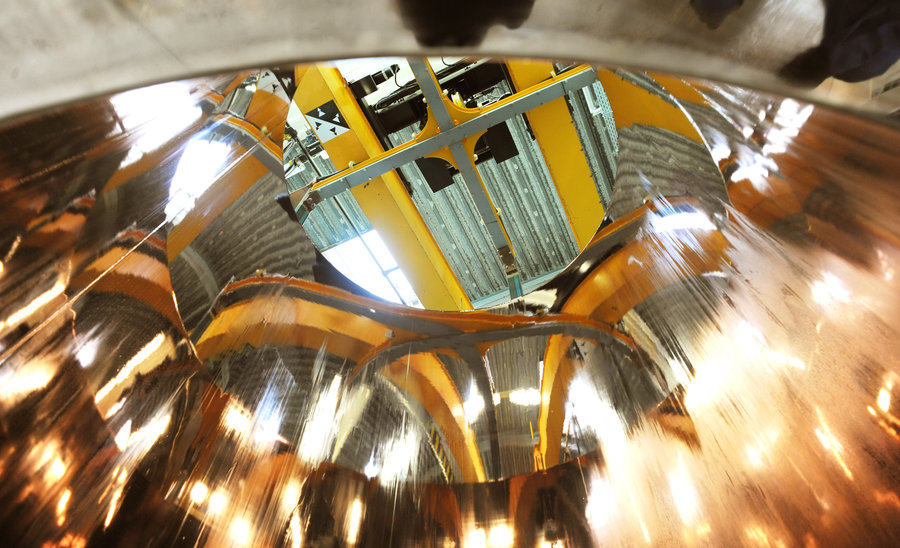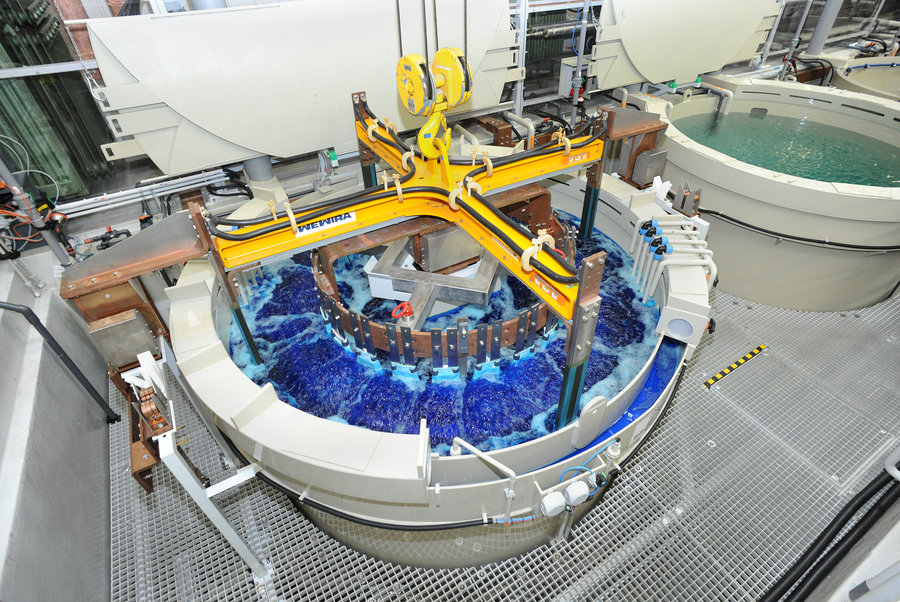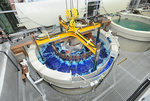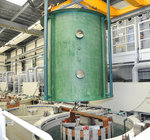Important milestone: State-of-the-art electroplating facility for special coatings on components of particle accelerators starts operation
29.07.2024 |
The GSI Helmholtzzentrum für Schwerionenforschung recently commissioned a cutting-edge electroplating facility. This new facility, which is one of the largest of its kind in the world, completely replaces the existing electroplating facility on the campus. It will take over the copper plating tasks for accelerator components at GSI and FAIR, in particular the coating of the new cavities of the UNILAC linear accelerator, which will serve as injector for FAIR in the future. After successfully completing the test phase with the copper plating of a sample tank, where all system specifications were met, the facility is now ready to begin copper plating the components.
Above all, the enormous dimensions of the baths and the ability to copper plate large components make the system unique. It is able to coat cavities with a diameter of around two and a half meters with homogeneous copper layers. A total of four custom-made bath tanks and two rinsing baths were installed in the galvanic hall in which the new system is housed. Each of these tanks has a diameter of 2.70 meters and a depth of 3.60 meters and can hold up to 19,000 liters of liquid.
With its modern equipment and special design, the new electroplating system operates precisely and optimally meets the high coating requirements. The new baths are specialized in applying copper layers of the highest quality and homogeneity and depositing layer thicknesses from a few micrometers up to 120 micrometers. To ensure uniform, high-gloss coating deposition, air is actively circulated through the bath and special heating and cooling equipment maintains the correct bath temperature during the coating process. Different anodes for the respective electrolyte metals and components to be copper-plated can be attached to the conductor rails in the middle of the baths.
Several weeks of preparation are required before a component is immersed in the electrolytes. First, areas have to be masked, coated with a protective lacquer and the surface prepared. Due to the complexity of the components, the preparatory work is carried out entirely by hand. All surfaces that are not to be copper-plated must be carefully covered with a galvanoresistant coating and multiple layers of lacquer to achieve effective protection against the electrolytes. The actual copper plating takes just one day and follows a defined process sequence through the various treatment baths. First, the component passes through a degreasing bath to remove grease and dirt. Next, an adhesion promoter is applied in a nickel bath to improve copper adhesion. After activating the surface with diluted sulphuric acid, the component is then coated with a layer of pure copper in a copper plating bath. Finally, the protective lacquer must be removed, and the copper surface hand-polished to retain the crystalline surface structure's properties and achieve a beautiful shine.
The new system will enable the coating of the improved acceleration cavities that will be installed as part of the modernization of the existing linear accelerator UNILAC. These improved modules will replace the rear part of the UNILAC in order to achieve the performance parameters required for the FAIR project. The copper plating of a total of 25 individual tanks is planned over the next few years. Following the successful coating of a test tank, which confirmed the functionality of the system, operation of the system will now begin. (JL)

















